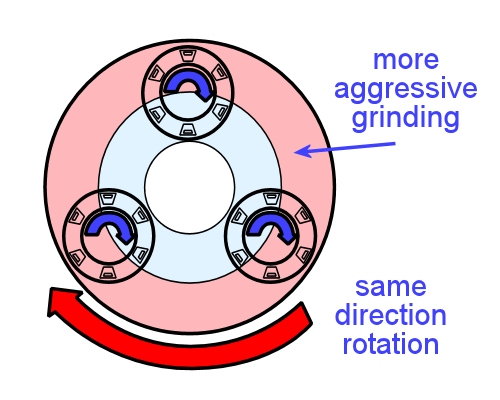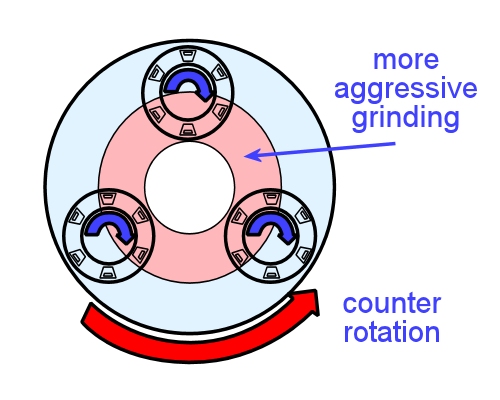Types of grinders
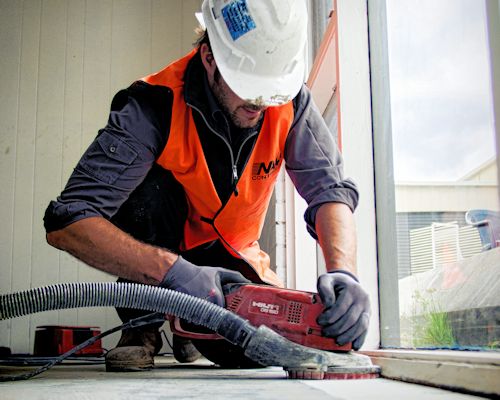 Audio for slide 1 (mp3 |6|KB)
Audio for slide 1 (mp3 |6|KB)
The final choice you make will depend on the size of the job and the type of material you need to remove.
In corners and tight areas, you can use a hand held grinder.
These purpose-made grinders have a dust shroud and extraction hose, unlike an ordinary angle grinder.
It's important to use these attachments when you're grinding concrete and generating a lot of dust.

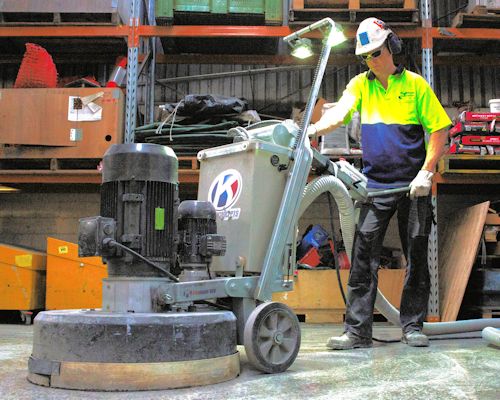 Audio for slide 2 (mp3 |6|KB)
Audio for slide 2 (mp3 |6|KB)
Most floor layers use machines driven by mains electricity - either 240 volts or three phase.
However, petrol, diesel, LP gas and compressed air are sometimes used to drive larger models.
The most common types of heads are single, double and planetary action, but it's also possible to get four headed grinders and other configurations for large projects.

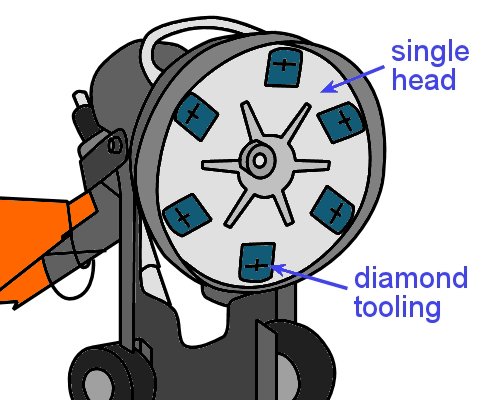 Audio for slide 3 (mp3 |6|KB)
Audio for slide 3 (mp3 |6|KB)
Single headed grinders
These grinders have a central shaft that drives a single head.
On smaller machines the head comprises one disc, often with a diameter of 250 mm.
Larger machines can take three discs in a range of diameters, generally up to 250 mm each, which gives them a grinding width of 550 mm or more.

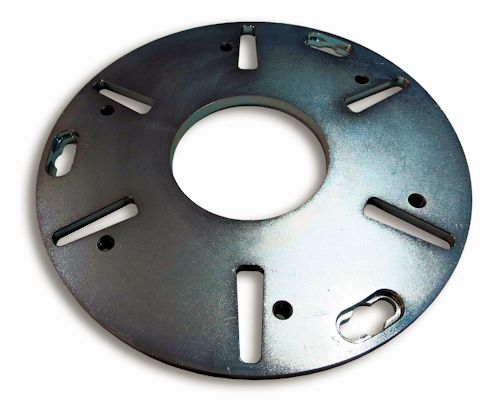 Audio for slide 4 (mp3 |6|KB)
Audio for slide 4 (mp3 |6|KB)
However, these machines are designed more for concrete polishing rather than preparing a surface for a floor covering.
Depending on the type of tooling you're using, the disc will have slots, holes or other mounting fixtures to take the diamond segments or plugs.

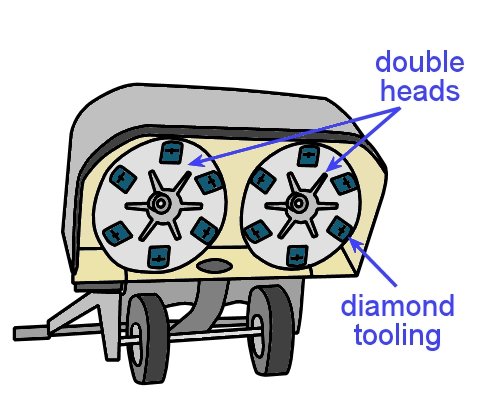 Audio for slide 5 (mp3 |6|KB)
Audio for slide 5 (mp3 |6|KB)
Double headed grinders
As the name suggests, double headed grinders have two shafts, and each one takes one or more discs.
On some machines, the shafts are counter rotating - that is, they rotate in opposite directions - to balance the torque and make the machine more manoeuvrable.
Other machines allow both heads to rotate in the same direction.
These grinders tend to pull to one side, which is a characteristic that can be put to good use when you're working along a wall.
The grinding width typically ranges from about 750 mm to 1000 mm.


Learning activity
Audio 9 (mp3 |6|KB)Do some research on the web or in manufacturers' catalogues to find information on the different types of grinders available in Australia.
For each type of grinder listed below, provide the following details:
- Manufacturer's name and model
- Grinding width
- Any special features or significant details about the machine
Types of grinders:
- Single headed grinder
- Double headed grinder
- Planetary action grinder







